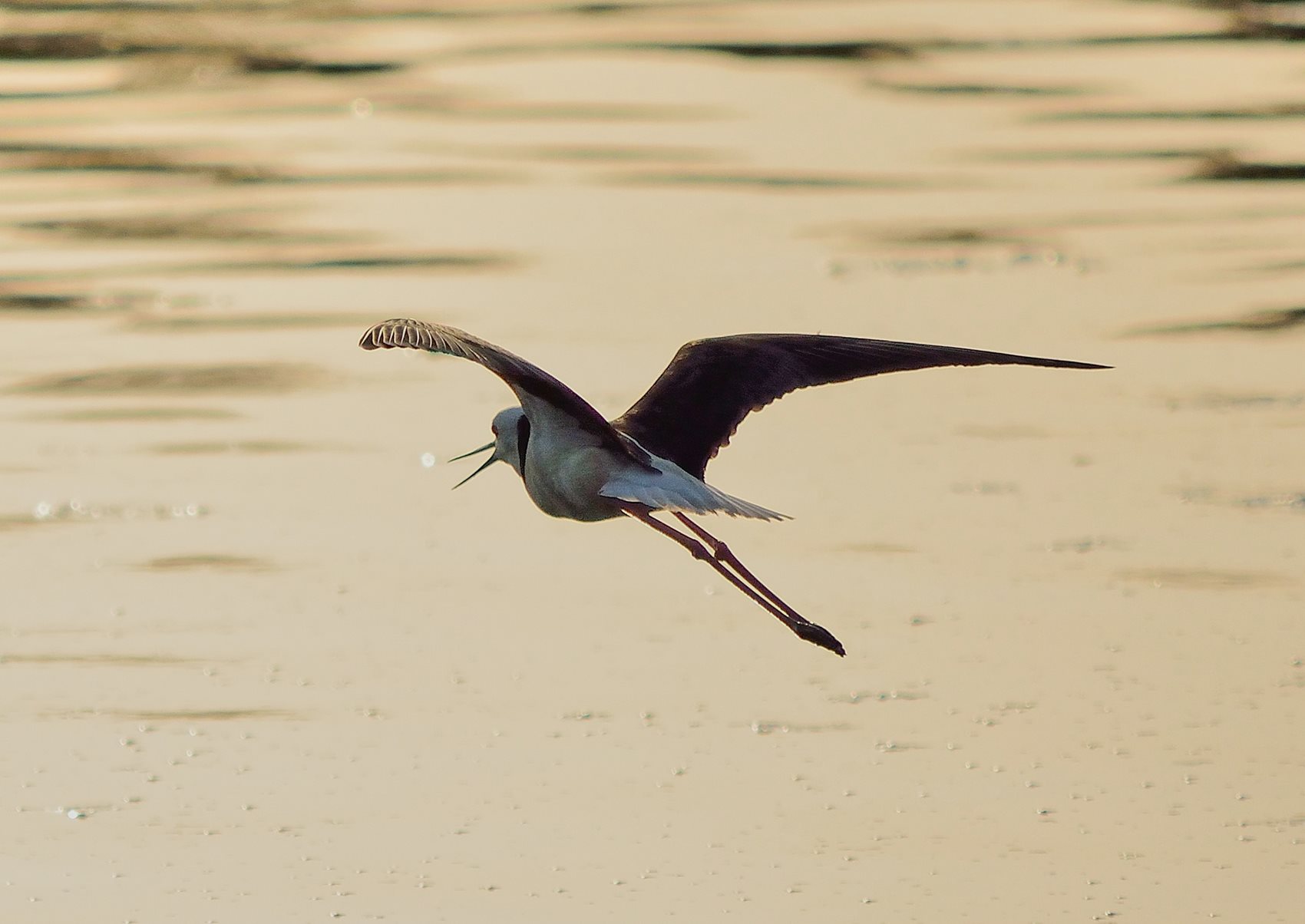Name:
Pied Stilt
Genus:
Himantopus leucochephalus
Description:
The Pied Stilt is a delicate-looking black and white wader commonly seen along the sandy or muddy edges of ponds. The back of its head and neck, as well as its back and wings, are black, while the rest of its body is white, forming a white collar between the black neck and back.
The bird's needle-like black bill and long, thin pink legs and feet trail behind it during flight, giving it its descriptive name. Immature Stilts lack the black on the head and neck, having only a grey wash in its place, while juveniles are camouflaged with a mottled brown instead of black.
Distribution:
The Pied Stilt can be found across Australia, with the right conditions, and ranges north through New Guinea and Indonesia as far as the Philippines. Unfortunately, a population has self-colonised New Zealand, where it has been hybridising with the endemic Black Stilt, posing a threat to the latter's survival.
Although it appears frail, it has proved itself capable of covering long distances in search of fresh feeding and breeding grounds, which it usually does at night. While restricted to habitats providing shallow water, it can be found from flooded salt lakes in the outback, across dams, rivers and wetlands to coastal estuaries.
Feeding:
The Pied Stilt feeds using its long, thin bill to probe sand or mud for small molluscs and worms, pick brine shrimp and other small crustaceans from the water, and collect flies and insects from the water surface and sediments.
Breeding:
The breeding season for the Pied Stilt generally occurs through spring and early summer. While Stilts will gather in colonies at a suitable nesting site, pairs tend to be territorial, maintaining some distance between nests. Pairs have been known to nest in small groups or independently.
The nest, usually in a small hollow or scrape near the water, is a collection of twigs padded with leaves and grass. They usually lay about four eggs, with incubation shared by the pair for about 25 days. The chicks leave the nest within hours of hatching and rely on their camouflage to hide in nearby vegetation or among rocks. The parents protect the chicks until they are able to fly after about a month.
In the Park:
Although not common in the park, the Pied Stilt will appear in small numbers when the ponds have exposed sand or mudflats. Immature birds have been found exploring the ponds after the breeding season. They are usually seen walking rapidly along the water's edge or, if flushed, flying low across the water, with pink legs trailing and making a yipping call similar to a small dog's bark.
 Image credit: Tony Spira
Image credit: Tony Spira